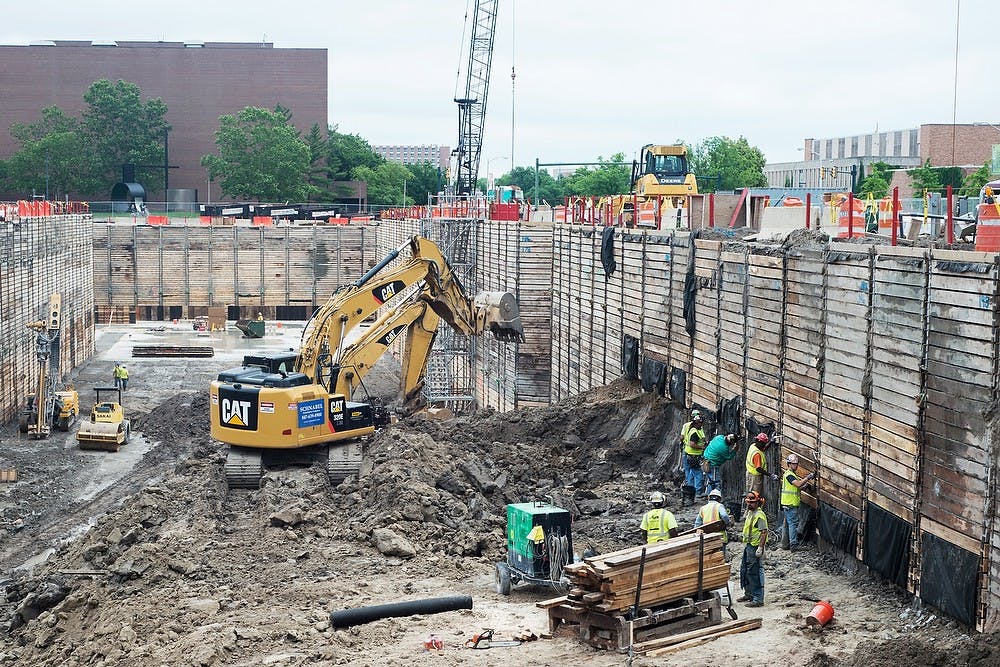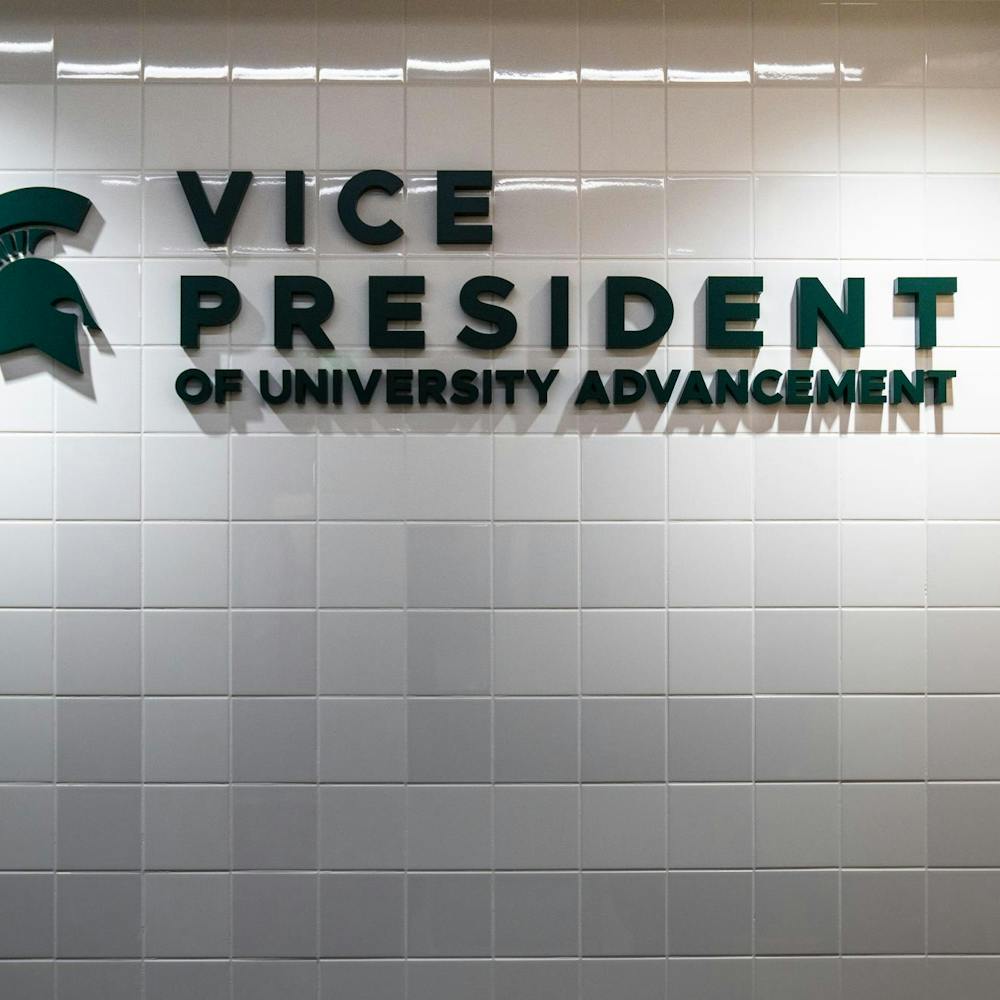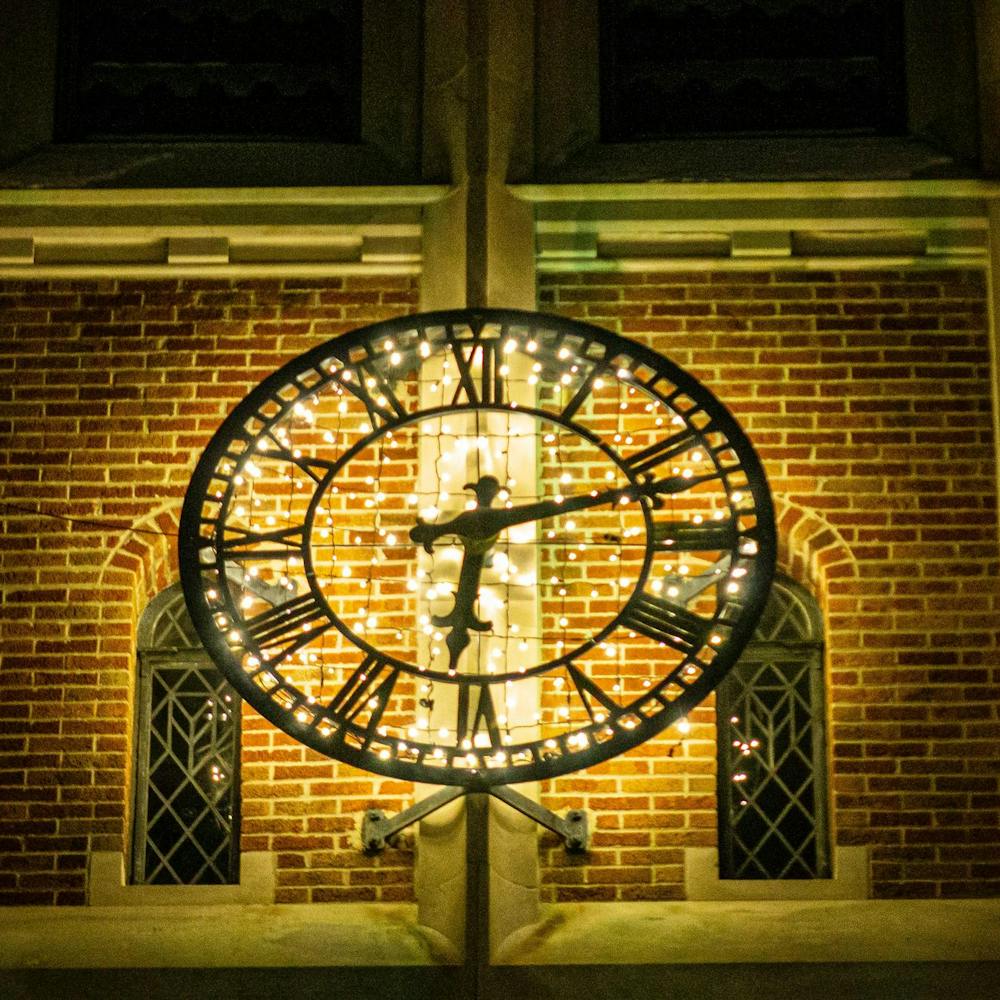For Bradley Sherrill, the chief scientist involved with FRIB, the most exciting part of the new facility is hard to pin down. FRIB is going to make new kinds of science research possible — research that hasn’t been feasible before using rare isotopes, he said.
“Already there’s more than 1,300 scientists from all over the world signed up to use the facility. People will be coming to MSU from all over the world to do their research side-by-side with researchers on campus,” Sherrill said.
The facility will use a particle accelerator to produce new forms of various elements, called isotopes. Researchers will be able to make very heavy or very light isotopes, and using the isotopes and will work toward trying to understand biological and environmental systems and even the nature of atoms themselves. The research will also help gain a better understanding of radiation and how isotopes can be better used for medical purposes.
By making and studying these isotopes, researchers can probe what holds atoms together and understand where they come from.
“This is like a genealogy project on a cosmic scale,” Sherrill said.
Strengthening Michigan
While FRIB is designed to attract scientists from all over the world, students on campus will also have the ability to join in on the potentially groundbreaking research.
Sherrill said any of the students on campus could find something at the facility of interest. FRIB will employ both graduate and undergraduate students in many disciplines and the project offers learning opportunities to those involved.
MSU is ranked first in graduate programs for nuclear science, according to the U.S. News & World Report. Recognized for its leadership role, Sherrill said MSU carries a lot of respect.
“There is only one facility of this nature in the world and MSU will be the home for it,” Sherrill said.
FRIB Project Manager Thomas Glasmacher said students should be excited about FRIB because of the vast opportunities available to them.
“We can combine the education of the next generation of scientists with where the students are and get them excited about science,” Glasmacher said.
The long-term goal of the project is to enable scientific innovations to make discoveries in nuclear physics.
“(Students) can get involved in cutting edge research right here in Michigan. Education is going to gain in value as MSU prestige rises,” Glasmacher said.
The project isn’t only providing new scientific opportunities. There are economic impacts, too. The creation of FRIB is providing jobs throughout each phase of the project. An estimated 5,000 one-year construction jobs have been created and 98 percent of the workers filling those positions are Michigan residents.
“As we go through different phases of the project, different trades come in to play and so many different people come with those trades — plumbers, electricians, pipe fitters,” Deputy Director of Conventional Facilities for FRIB Chris Thronson said.
Glasmacher said there have been some difficulties project teams have faced. The attraction of highly qualified staff and maintaining relations with those who want to build and design a one-of-a-kind project is tough, Glasmacher said.
Glasmacher also said FRIB will be a major economic asset to Michigan within the next 10 years, providing 400 full-time jobs both at FRIB and in related industries.
Michigan will receive about $1 billion in total economic activity, Glasmacher said, with $600 million of that reflected in cost of design, engineering and construction and $187 million in state tax revenues.
Building a National Icon
While the official groundbreaking ceremony was held in March, Thronson said constructing the shell of the building will take three years. He also said the technical design will take an additional two years to put together after the shell is completed.
Thronson said the planned completion date for FRIB building itself is March 2017, but the construction is currently eight weeks ahead of schedule.
Construction crews must first put a waterproofing material down to cover the entire bottom of the excavation — which is 40 feet below the surface. Crews can then focus on building the foundation. The first placement of concrete was put down last week and Thronson said an additional seven placements of concrete will be necessary.
After the finalization of the FRIB technical design, the U.S. Department of Energy paid a visit to campus to review and assess the readiness for technical construction.
FRIB is being funded by the U.S. Department of Energy and the State of Michigan. The Department of Energy has committed $99 million and the State of Michigan has committed $38 million for a total of $137 million spent as of May 31.
Last Friday, MSU’s Board of Trustees approved the facility to receive $648.7 million in federal funds for the final leg of the project.
As of now, the authorized amount is $185 million with another $90 million in the President’s budget request to Congress by fiscal year 2015.
The total project cost is $730 million and the entire project is expected to be completed by 2022.







